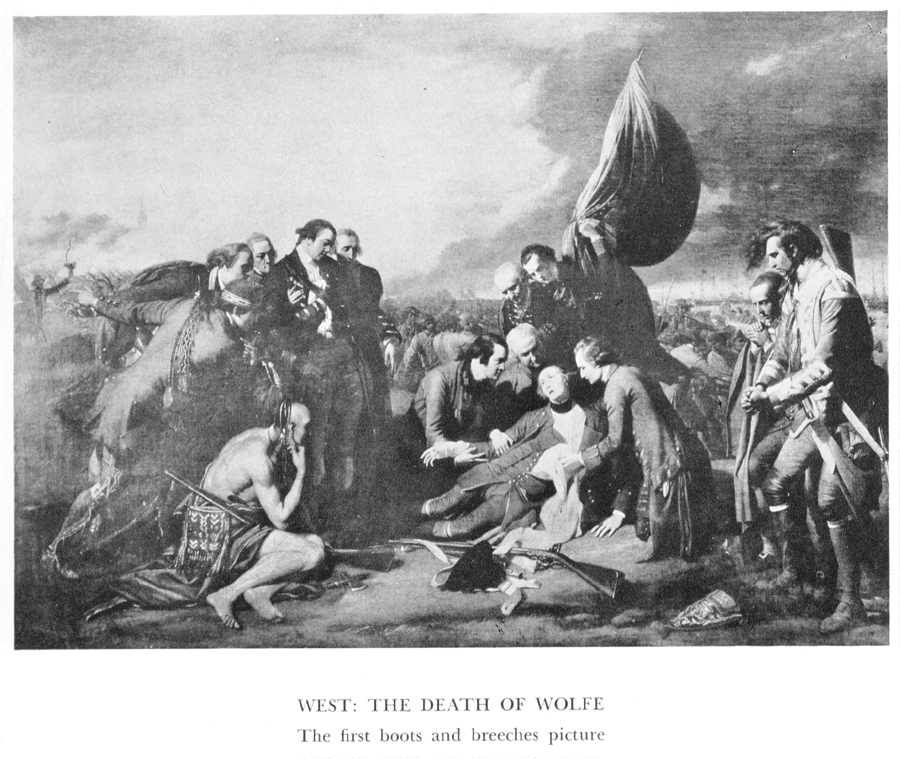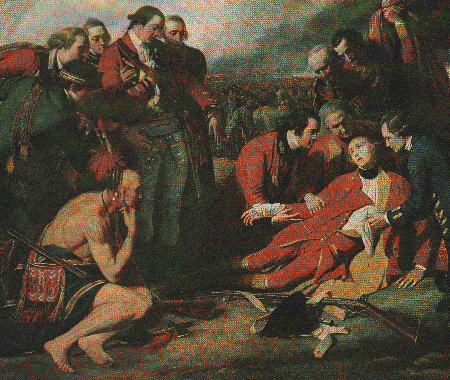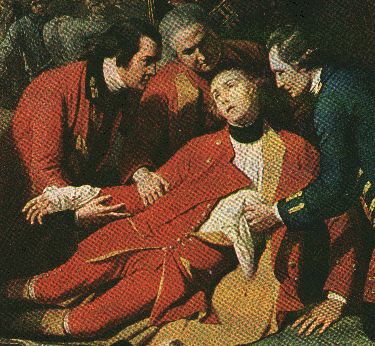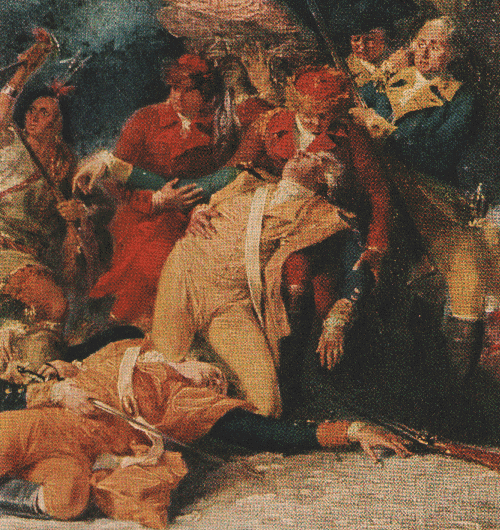
For an extensive discussion of "The Death of General Wolfe and New Directions in the 1770s," see: Helmut Von Erffa and Allen Staley, The Paintings of Benjamin West (1986), pp. 54-86; 211-216. See also: Barbara J. Mitnick, "the History of History Painting," in Picturing American Painting, 1770-1930, edited by William Ayers (1993), pp. 28-43. With respect to the accounts of Wolfe's death and who was with him when he died, see: Lorenzo Sabine, An Address ... Tuesday, September 13, 1859, the Hundreth Anniversary of the Death of Major General James Wolfe, ... (1859).

Image source: James Thomas Flexner, America's Old Masters, 1939, p. 66.

Image Source: American Heritage (December 1959), p. 30, Benjamin West, detail from The Death of General Wolfe,© National Gallery of Canada

Trumbull's Death of Montgomery (1786):
John Trumbull painted the Death of Montgomery in 1786 in West's studio in London where he was studying under West. See E. H. Silverman, "Painter of the Revolution," American Heritage, June 1958, pp. 41-51; 95-97.
General Richard Montgomery was an American General who was killed in late December 1775 during a futile American effort to take Quebec from the British. Aaron Burr, possibly the second best known American hero-turned-villain (after Benedict Arnold), attempted in vain to carry Montgomery's body from the field. If Trumbull had painted this death scene a decade or so later, before Burr shot Alexander Hamilton (1804) and was tried for treason (1807), perhaps he might have elevated Burr to Hero? For Burr's efforts to rescue Montgomery, see Milton Lomask, Aaron Burr: The Years from Princeton to Vice President, 1756-1805, p. 41:
Grapeshot pouring into the imperfect light of the dawn mortally wounded Montgomery and two of his aides. The general's last words were to Burr. "We shall be in the fort in two minutes," he said even as "he recieved the grapeshot & fell in his arms." Of those in the front row, only Burr anda French guide remained alive, and Burr's earnest efforts to rally the men behind him and push on were countermanded by an order to retreat from the slain general's successor in command. Aaron's Princeton classmate, Samuel Spring, had come north as chaplain of the expedition. It is from Spring that we have the memorable story of Burr's final actions at Pres-de-ville that morning. As the other Americans fled before the pursuing Canadians, Aaron lingered behind in a futile effort to carry off the body of Montgomery and ensure it a proper burial. The minister's story, as told years later, had Little Burr hoisting the general, a big man, to his shoulders, and then stumbling through deep snow for several yards before dropping his burden to avoid capture."

graphic ©American Heritage, 1959
See also West and Trumbull's versions of the Noble Savage.
Click here to return to lecture outline.
Lectures and format ©Ed Papenfuse
State Archivist
Maryland State Archives
Phone: (o) 410-260-6401
Email: edp@mdsa.net